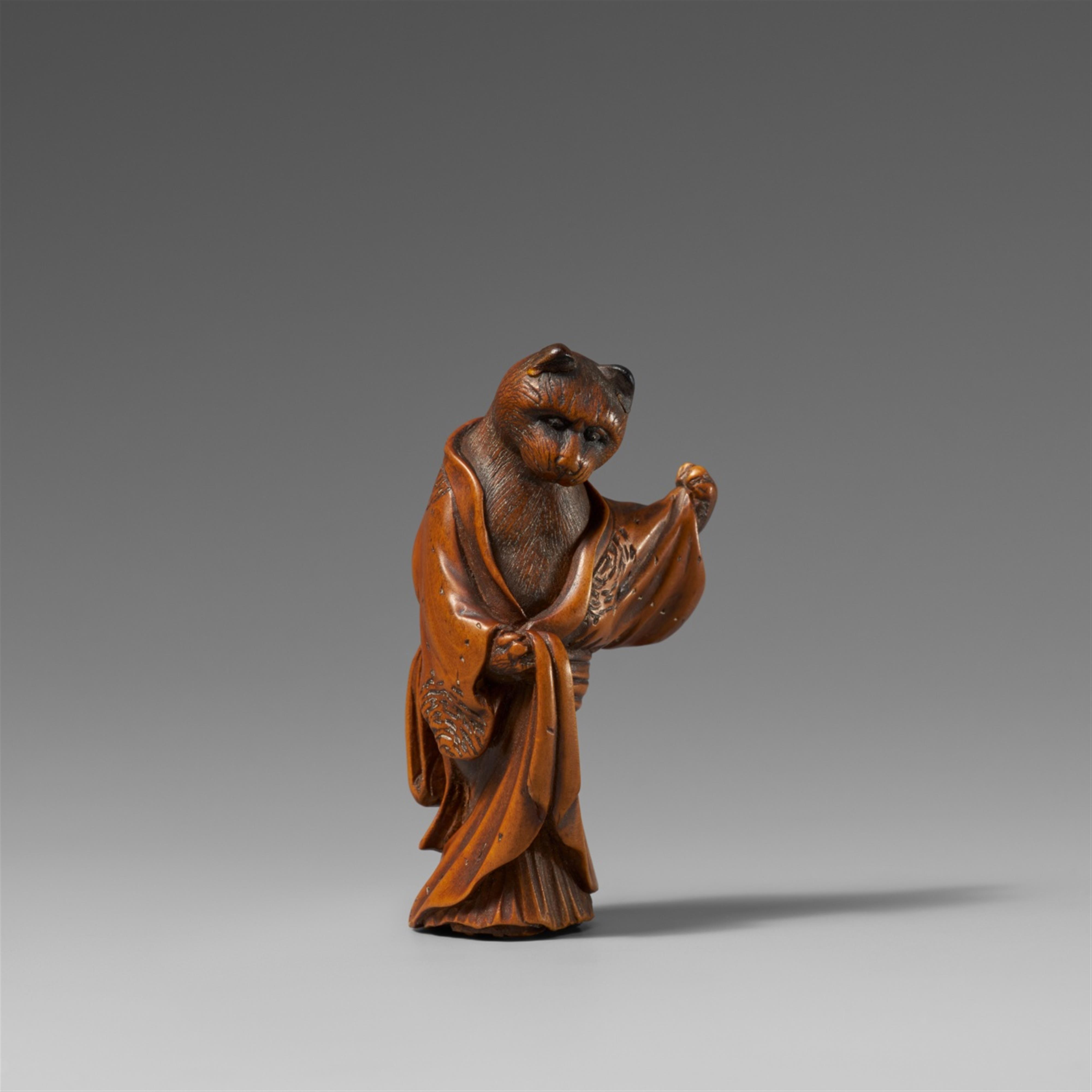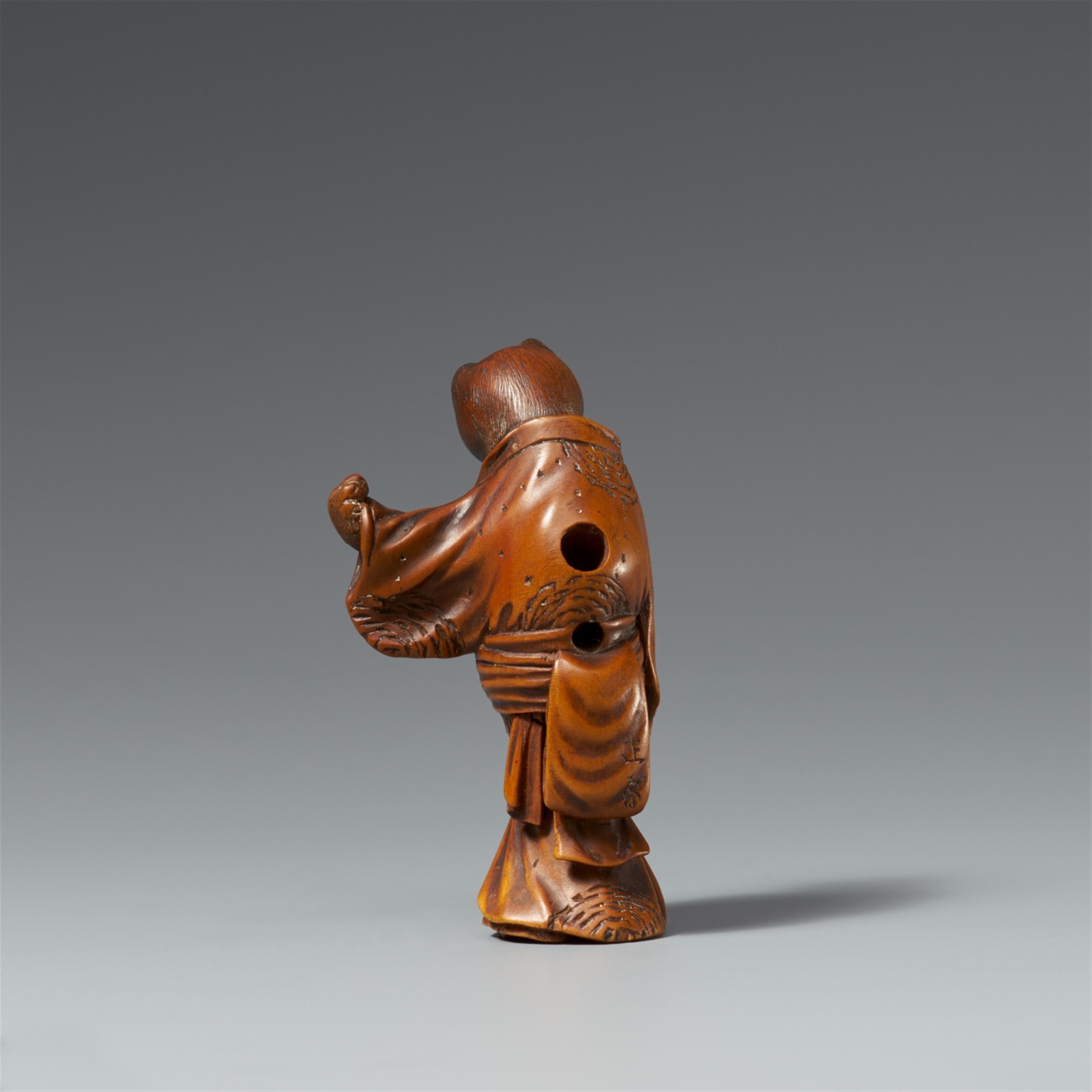A boxwood netsuke of a cat in kimono. Late 19th century
Standing upright, clad in a loosely tied kosode with asa-no-ha pattern open at the chest and coquettishly lifting the garment in front. Signed Masaka.
Height 5.2 cm
Cats are said to be able to turn into young women. The best-known legend is “Nabeshima no neko” (The Cat of Nabeshima), and maybe the cat here represents O Toyo, the lover of a Nabeshima daimyô in Hizen province. The starting point of the long tale is the murder of O Toyo by a huge cat, which subsequently takes on the body of its victim.
It is also possible, however, that the figure may represent a prostitute, neko (cat) being a nickname for members of that profession.
A recent interpretation of the subject is that it is an illustration of a popular song of the late eighteenth century, which had a revival in the late Edo period, and begins: Neko ja neko ja to oshaimasu ga, neko ga geta haite/ tsue tsuite/ shibori no yukata de kuru mono ka/ Otchoko choi no choi (I am Neko, I am Neko, a cat who wears geta, who carries a staff, who is dressed in a yukata with shibori design, Otchoko choi no choi) (Y. Yoshida in Sagemonoya 2000, p. 136, no. 125).” (Jirka-Schmitz 2005, p. 249)
Provenance
Private collection, Rhineland-Palatinate, Germany




